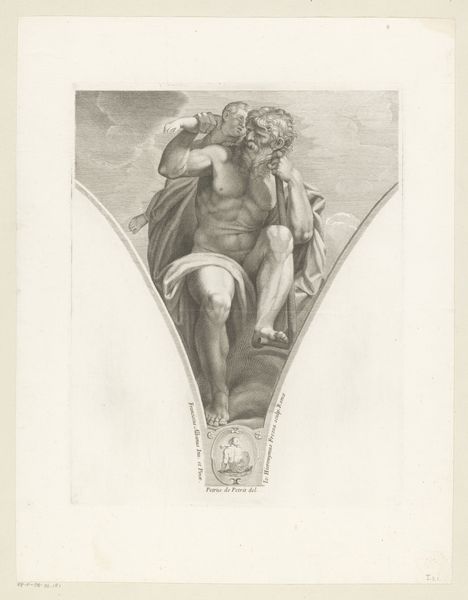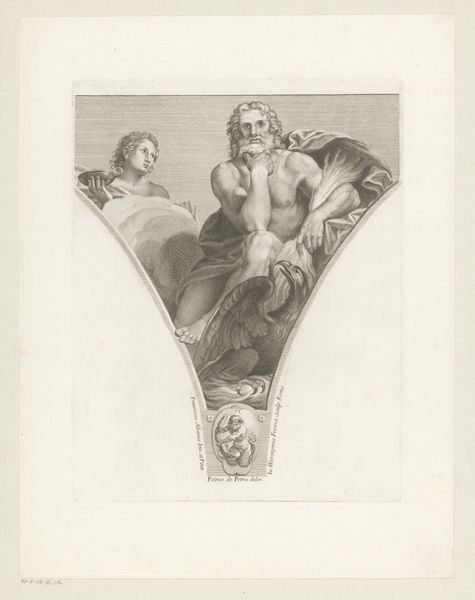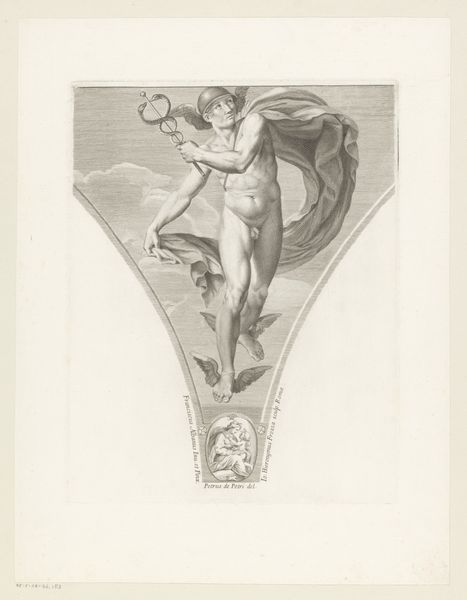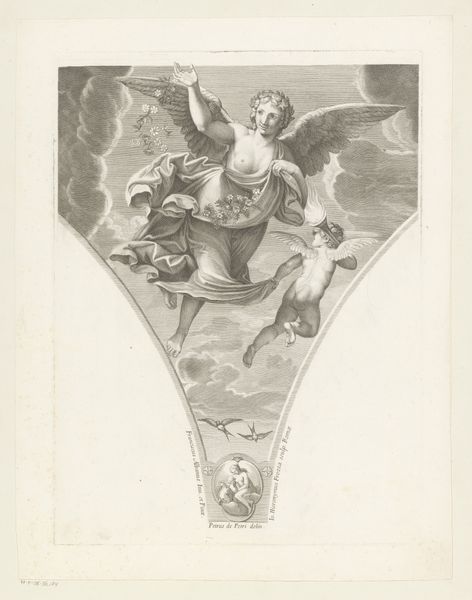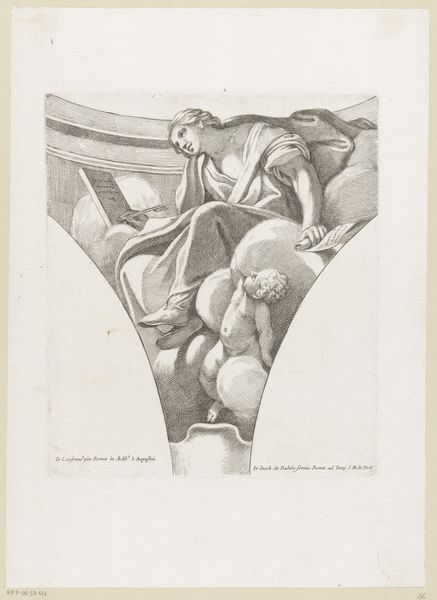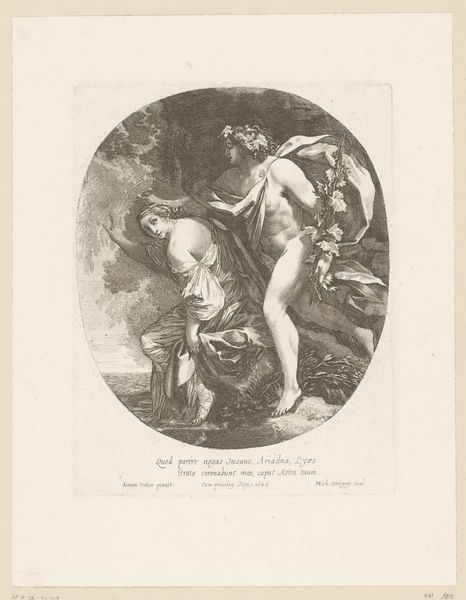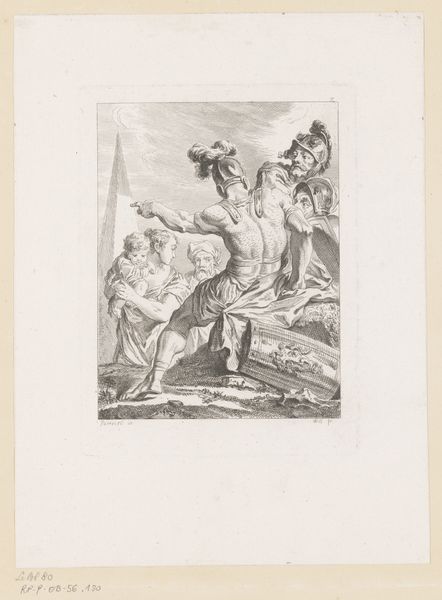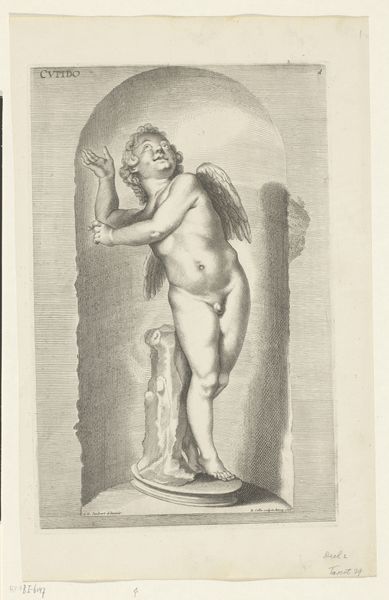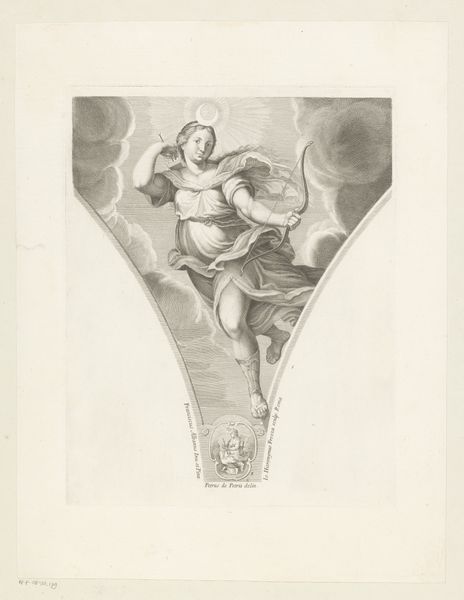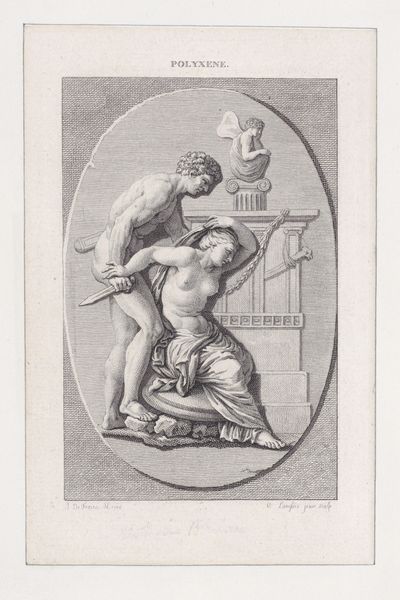
engraving
#
allegory
#
baroque
#
old engraving style
#
figuration
#
line
#
history-painting
#
nude
#
engraving
#
realism
Dimensions: height 360 mm, width 281 mm
Copyright: Rijks Museum: Open Domain
Curator: What strikes me immediately is the cool, almost ethereal quality of the engraving, even before knowing it’s an allegorical depiction of Venus and Cupid. Editor: Indeed. This engraving, entitled "Venus en Amor," was crafted in 1704 by Giovanni Girolamo Frezza. It reflects a continuation of baroque aesthetics within early 18th-century printmaking, showing strong historical connections to the Italian tradition of mythological scenes. Curator: The hatching! Look at the almost scientific rendering of form and light, how Frezza coaxes such a sensuous vision from mere lines on a plate. The figures almost float! Editor: Consider the socio-political climate in which this was created. The Baroque period often utilized allegory to explore power dynamics and societal expectations, particularly those tied to patronage. A work such as this likely served both an aesthetic and potentially propagandistic function, presenting idealized figures aligned with prevalent cultural values. Curator: I see, you’re thinking about how such imagery would reinforce or perhaps subvert then-contemporary expectations about love and beauty through classical themes. Editor: Precisely. And if we think about where prints like these circulated—likely amongst wealthy elite—then it paints a clear picture of how classical narratives were re-purposed. Curator: Despite the implied layers of meaning, there's undeniable delight in the craft, a celebration of pure form through those very fine, precise lines. The figures achieve a powerful presence despite their being so delicately rendered. Editor: A fitting duality, I think. It underscores the inherent tensions present when art functions within established social frameworks, allowing both beauty and ideological intent to co-exist. It’s really compelling when viewed from either lens, formalism or historical interpretation. Curator: Agreed. Thank you, that truly enriched my understanding of the piece. Editor: My pleasure. This dance between form and history, always revealing!
Comments
No comments
Be the first to comment and join the conversation on the ultimate creative platform.
